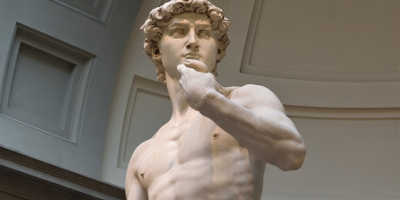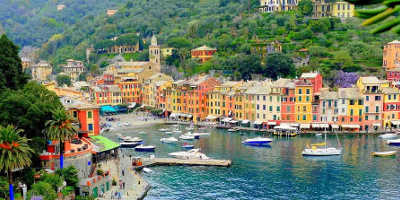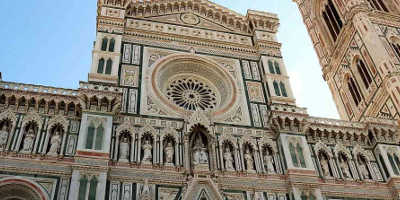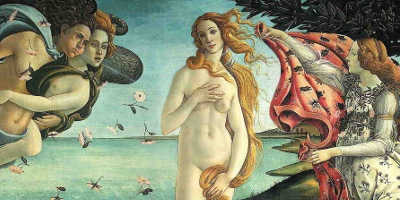History of the Statue of David
Perhaps one of the world’s most famous sculptures is the immaculate David.
Hundreds of years old the statue have survived the passage of time to become one of the most instantly recognisable and most reproduced pieces of art on the planet.
Art Style
David is a work of early renaissance art and a formative piece. The renaissance began in Italy as the population grew richer. Suddenly aristocrats had large sums of money and they were willing to spend it on artists and geniuses. City-states, such as Florence, also played an important part in the rise of the renaissance as wealth was generally concentrated in a single powerful family that would want to show off their city’s talents through artworks.
The biggest shift into the early renaissance period was an emphasis on humanism and accuracy in the depiction of bodies. Art composition also began to emerge in new ways, it was during the early renaissance that the golden ration first began to be used in painting. Da Vinci famously used this ration to construct many of his most famous artworks. It has been shown that Michelangelo also used this mathematical principle in many of his pieces.
Michelangelo, the artist responsible for David, was a Renaissance Man meaning that he was a talented expert in a variety of fields. He specifically was a brilliant sculpture and painter, architect, poet, and anatomy. It is worth noting though that despite his genius, many of Michelangelo’s works are unfinished. This is somewhat ironic given that he became rivals with Leonardo da Vinci after making a joke about him not finishing a statue of a horse.
Biblical Art
During the renaissance, biblical art was particularly popular. With the rise of the Catholic Church, it was common for wealthy families to commission works depicting biblical stories of figures. Additionally, the Church itself was very wealthy and commissioned the greatest renaissance artists to create the amazing art still seen in the Vatican today.
Michelangelo was one of these artists. While in Florence most of his work depicted biblical figures and it was not long before he was sponsored by the Catholic Church to work in the Vatican. Though the Church hired him as a painter, Michelangelo saw himself as a sculpture. As such sculpting was his preferred medium.
Who is David
David is a biblical figure from the Old Testament. His story is part of the Book of Samuel and is a young shepherd who becomes close with the king due to his musical talents. A war comes between Israel and the Philistines, and the giant Goliath challenges the Israelites to send a champion to face him in one-to-one combat. David volunteers, saying that he can defeat the giant. Though he is offered armour by the king he chooses to refuse it, and eventually kills the giant with his sling.
The story has become a modern tale of the underdog and is perhaps the most famous underdog story.
What makes Michelangelo’s David unique
When depicting biblical stories in art it was most common to include key icons of the story to make it easily recognisable. As sculptures and paintings are but single images there isn’t a lot of opportunities to tell the viewer what is going on. As such there scenes are typically busy and artworks of the same story will generally have the same icons.
What makes this statue of David so unique is that Michelangelo was the first to entirely omit Goliath.
Artists had shown David mid-swing, standing over Goliaths head, presenting Goliaths head to the king, but no one had ever omitted him entirely. Art historians believe that David is preparing for battle in the scene. This theory comes from him looking tense and ready for combat.
The statue is reminiscent of the ancient Greek theme of heroic male nudes. David is resting his weight on his back leg, this causes his hips and shoulders to slant. His torso is caused to have an S curve, this is known as contrapposto. The statue has become a symbol of strength and youthful beauty.
Creating David
Michelangelo worked on David from 1501 to 1504, however, the statue’s history begins before that. In the early 1400s, the Office of Works of Florence Cathedral had plans to commission twelve large sculptures of Old Testament figures for the buttresses of the cathedral. By 1464 only two sculptures had been completed and the sculpture of David was started.
An artist known as Agostino worked on a huge block of marble for two years before leaving the project unfinished. There was rough marking of the legs feet and torso but it was far from finished. Ten years later Rossellino was commissioned to finish the work but he too quickly left. For twenty-six years the marble sat exposed to the elements, neglected and unworked on.
In 1500 the Office wanted someone to finally finish the work. After contemplating Da Vinci and other artists, Michelangelo was able to convince them to commission him. In late 1501 he officially won the contract, one month later he began working on the statue. It would take him over two years to complete it.
Visit the Statue
Once the statue was completed officials realised they would be unable to lift the more than six-ton statue onto the church roof. As such a vote was had by local geniuses to determine its position. Da Vinci and others believed due to the marbles imperfection it should be under a roof, while others argued for it to be placed outside the city’s town hall.
In mid-1504 the statue was placed at the entrance to Plazza Vecchio. In the mid-1800s cracked were noticed on the statue’s surface. In 1873 David was moved to the Accademia Gallery to protect it from further damage. In 1910 a replica statue was placed where the original once stood.
Today the statue is still in the Accademia Gallery and waiting for you to visit. You can see David and a whole collection of other magnificent artworks on our Accademia & Florence City Tour. Book in today and secure your date to visit this unbelievable feat of art!
Related article: What to see at the Accademia Gallery in Florence?






